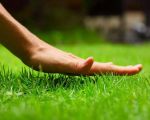
- Importance-of-Preparing-Your-Lawn-for-Colder-Weather
- Step-1-Clean-and-Remove-Debris
- Step-2-Fertilize-and-Feed-Your-Lawn
- Step-3-Mowing-Strategies-for-Fall
- Step-4-Overseeding-to-Repair-Bare-Patches
- Step-5-Watering-Considerations-Before-Winter
- Professional-Help-and-Services
1. The Importance of Preparing Your Lawn for Colder Weather
As the vibrant days of summer give way to the chill of autumn, preparing your lawn for colder weather becomes crucial. Many homeowners underestimate how much the lawn’s health depends on effective fall care. Proper preparation not only protects the grass from frost damage but also sets the stage for a lush, green lawn come springtime. Neglecting these steps can lead to patchy, weakened grass that struggles to recover after winter.
Think of it like this: your lawn is entering a dormancy phase, similar to hibernation, where its growth slows down but its roots remain active. Providing the right nutrients, removing debris, and protecting vulnerable areas are key actions that help your lawn survive the cold months and thrive once temperatures rise again.
2. Step 1: Clean and Remove Debris
One of the first and most important tasks in fall lawn preparation is clearing away leaves, sticks, and other debris. When these materials accumulate, they block sunlight and trap moisture, which can encourage mold growth and disease. Many homeowners don’t realize that a thick layer of leaves left over winter can suffocate the grass underneath.
Using a rake or a leaf blower, thoroughly clean your lawn regularly during autumn. A personal story from a local gardener shows how removing debris transformed a previously patchy lawn into a healthy, green carpet by the next spring. This simple step prevents many common winter lawn issues and promotes better air circulation, which is vital for root health.
2.1 Why Debris Removal Matters
Not only does debris block sunlight, but it also creates a moist environment ideal for fungal diseases such as snow mold. Clearing your lawn reduces these risks and keeps the grass blades dry, allowing your lawn to breathe and maintain strength during the cold season.
3. Step 2: Fertilize and Feed Your Lawn
Applying a slow-release fertilizer rich in potassium during fall is essential. Potassium strengthens the grass’s root system and improves its ability to resist cold damage and disease. While many homeowners focus only on spring fertilization, fall feeding can be even more impactful for long-term lawn health.
For example, in a recent community workshop, experts emphasized that lawns treated with a proper fall fertilizer had significantly fewer winterkill spots. Fertilizing at the right time ensures nutrients are available when the grass most needs them to repair and store energy.
3.1 Choosing the Right Fertilizer
Look for fertilizers labeled for fall use or with a higher potassium ratio (the third number in N-P-K ratios). Avoid high nitrogen formulas late in the season as they encourage tender growth that may freeze.
4. Step 3: Mowing Strategies for Fall
Adjusting your mowing height as temperatures drop is another important factor. Cutting your grass too short before winter can expose the crowns and roots to harsh frost, while leaving it too long may encourage disease. Aim to gradually lower your mower blade to about 2 to 2.5 inches during the final mowings of the season.
One homeowner shared how raising the mowing height slightly last fall prevented damage during an early freeze, leading to a quicker recovery the following spring. This subtle change makes a noticeable difference in lawn resilience.
4.1 Avoid Cutting Wet Grass
Always mow when the grass is dry to avoid clumping and minimize stress. Wet grass clippings can promote fungal growth and complicate cleanup.
5. Step 4: Overseeding to Repair Bare Patches
Overseeding in early fall can help repair worn or bare patches in your lawn. This step replenishes the grass population, making your lawn thicker and better able to crowd out weeds. Selecting seed types suited for your climate and soil conditions is crucial to success.
A landscaping professional once recounted how overseeding turned a neglected yard into a lush lawn that neighbors admired. This step, while sometimes overlooked, greatly improves lawn texture and durability after winter.
5.1 Best Practices for Overseeding
Prepare the soil by aerating to reduce compaction, then evenly spread the seed and keep the area moist until germination. Timing is critical—seeding too late can risk poor growth before winter.
6. Step 5: Watering Considerations Before Winter
Proper watering is essential as your lawn transitions into dormancy. Deep watering during dry fall spells helps roots grow stronger and stores moisture for winter. However, avoid overwatering as saturated soil can freeze and damage roots.
Experts recommend watering early in the day to allow grass blades to dry and reduce fungal risks. Monitoring soil moisture with a simple probe can guide you to water only when necessary, preserving water and protecting your lawn.
7. When to Seek Professional Help and Lawn Care Services
Though many lawn care tasks can be done by homeowners, sometimes the best results come from professional expertise. Especially for complex issues like soil testing, pest control, or specialized fertilization, professional lawn care services can provide tailored solutions.
If you want to ensure your lawn is fully prepared for the colder months with minimal effort, consider visiting Lawn Care Services. Their experts can recommend the best products, equipment, and care plans customized for your lawn’s unique needs. This not only saves time but also ensures optimal results, setting your lawn up for success year-round.








